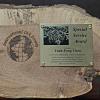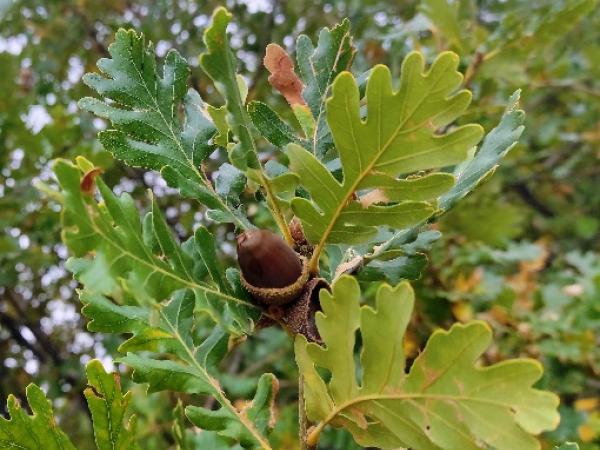Editor's Picks
Plant Focus
James MacEwen and Steve Potter
Quercus ×benderi Baen. is currently accepted as a hybrid between the North American scarlet oak, Q. coccinea, and northern red oak, Q. rubra, although some parts of the internet would have you believe otherwise. For a small sample of the nonsense available for your perusal you could try the following: “a hybrid tree species derived from the intersection of several oak species, primarily Quercus rubra (Northern Red Oak) and Quercus macrocarpa (Bur Oak)” (link); “Quercus × benderi is a hybrid oak tree that results from the crossbreeding of two parent species: Quercus robur (English oak) and Quercus bicolor (swamp white oak)” (link); “This tree is a cross between the Quercus robur and Quercus cerris” and “Quercus ×benderi Baenitz … is a hybrid species of the white oak and swamp white oak” and (!) “… a hybrid species that comes from crossing Quercus cerris and Quercus suber” (link); “The Bender’s Oak (Quercus × benderi), a majestic hybrid of the English Oak (Quercus robur) and the Sessile Oak (Quercus petraea)” (link); “… a species of oak tree native to the Mediterranean region” and “a species of oak tree native to China” (link).

©James MacEwen
It was first described in 1903 from Szczytnicki Park in the city of Wrocław in modern-day Poland by Karl Gabriel Baenitz (1837−1913). At the time the park was known as Scheitniger Park in the city of Breslau in German Lower Silesia. It was believed to have arisen spontaneously in cultivation there, although whether Baenitz located the parent trees is unclear. He named it in honor of Georg Bender, Mayor of Breslau “who is very interested in the continuous development and prosperity of the city’s gardens.”
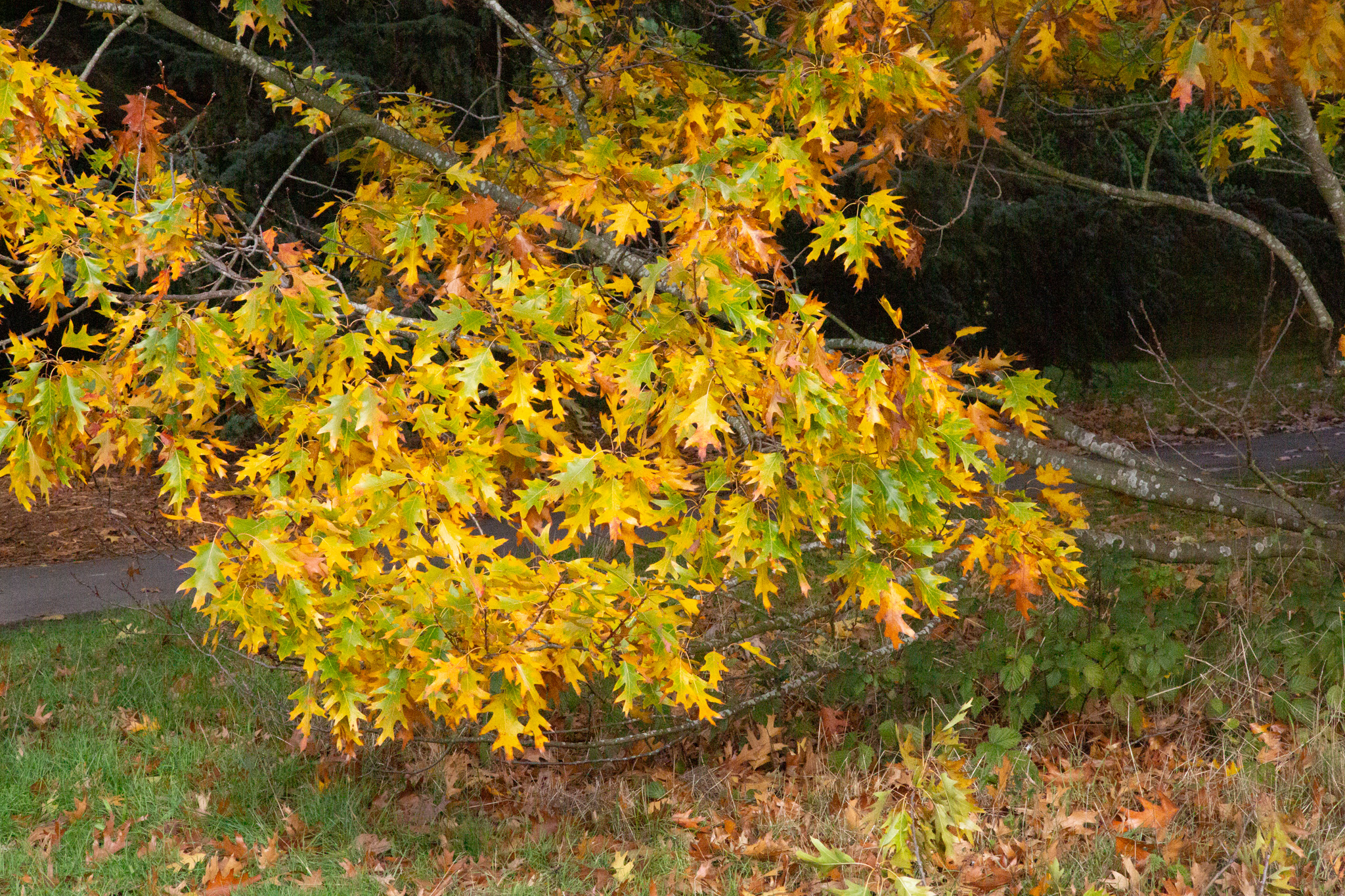
©James MacEwen
Charles Sprague Sargent’s Manual of the Trees of North America, second edition, 1922, refers to the tree, stating that “a supposed hybrid of Quercus coccinea and Q. borealis var. maxima [a synonym of Q. rubra], appeared several years ago in Silesia, and a similar tree has been found in the Blue Hills Reservation near Boston.” The first comprehensive New World reference to it is in Palmer’s 1948 article, “Hybrid Oaks of North America”. He noted its distinctive yellow autumn leaf color, as also noted and photographed by the first author of this piece at the Royal Botanic Gardens, Kew. Palmer stated that “examination of the specimens distributed by Dr. Baenitz rather suggests Quercus ellipsoidalis E.J. Hill, a tree that was scarcely known as a distinct species in Europe at the time × Q. Benderi [sic] was published,” but surely the yellow autumn color discounts such a possibility. Nonetheless, he was slightly skeptical as to whether the tree was indeed a cross between Q. coccinea and, Q. rubra, suggesting that “It is perhaps best to leave the question open until fuller evidence is available.” Seventy-five years of further evidence gathering has established the parentage of the hybrid.
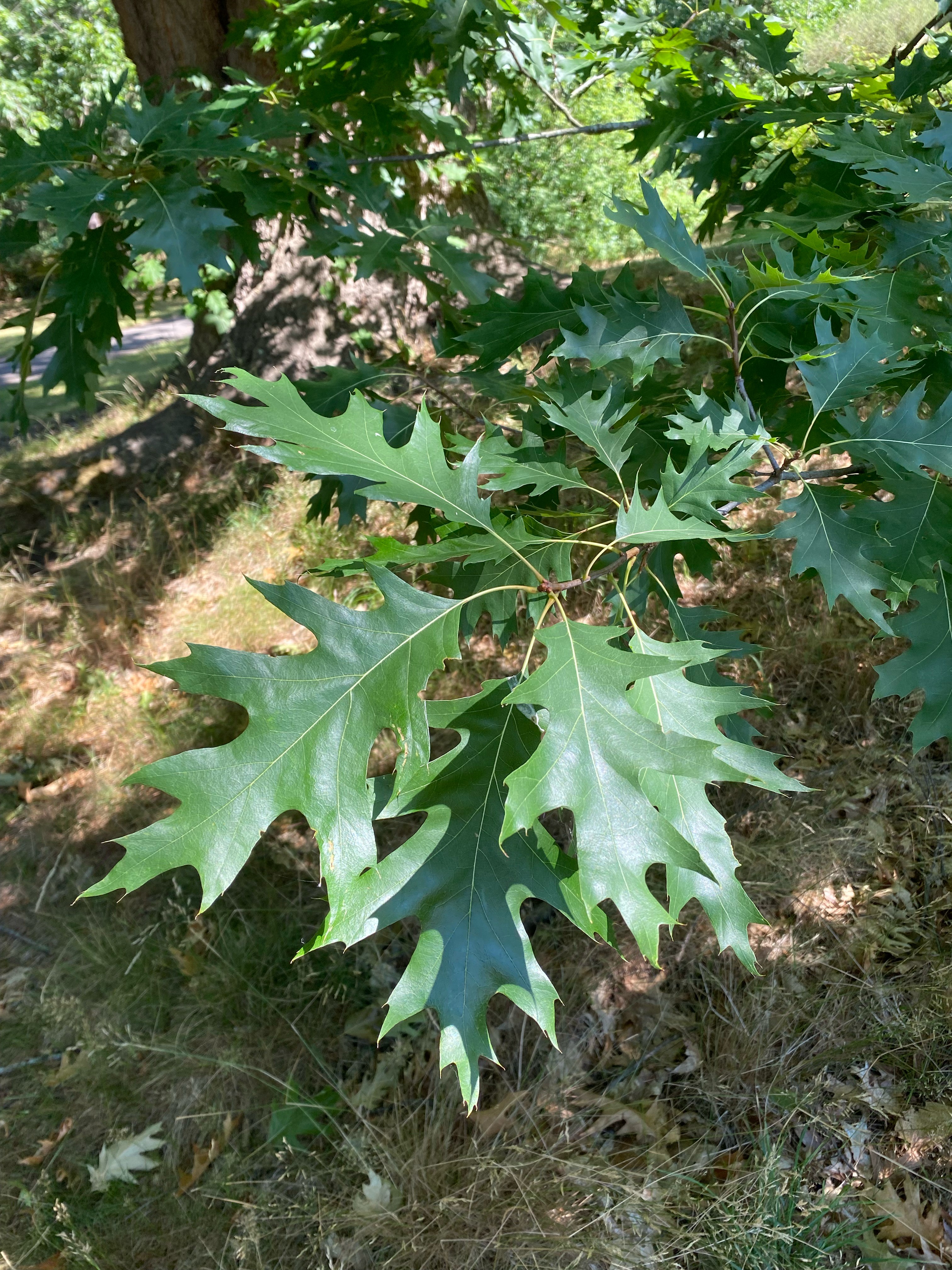
©James MacEwen
It is a handsome and vigorous tree, performing well in both the USA and Northern Europe, although in Britain it’s at its best in the south-east of England. The two largest specimens are in the collection of the Sir Harold Hillier Gardens in Hampshire. Their last recorded heights (in 2021) were 25.5 and 25.6 meters respectively, with girths of 220 and 201 cm (The Tree Register 2025).
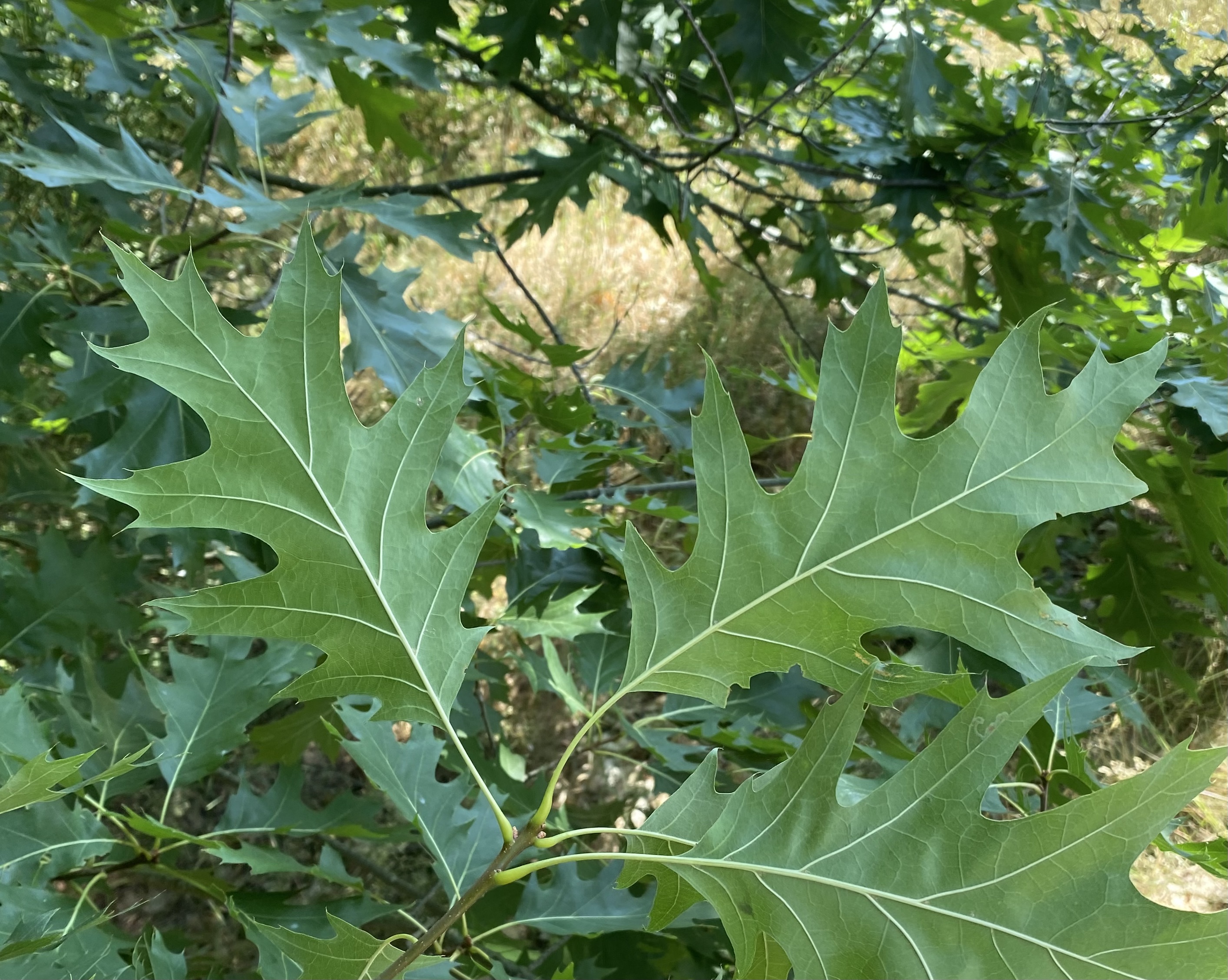
©James MacEwen
We have been unable to find much information on growth rates in the USA. Writing about the Scott Arboretum of Swarthmore College (International Oaks No. 6, 1995) Andrew Bunting mentioned that “Our most prized specimen shade tree is Quercus ×benderi. The Bender oak is a naturally occurring hybrid between Q. rubra and Q. coccinea. This tree is estimated to be over 350 years old. Because it has been grown in cultivation for most of its life (probably as a pasture tree early on) it has developed a massive spreading crown.” It appears that this tree was felled prior to 2009 as a result of its declining condition. Local chainsaw artist Marty Long carved an in-situ sculpture of a twisting oak leaf and acorn from the stump.

©James MacEwen
The Arnold Arboretum of Harvard University has one mature specimen of Q. ×benderi in its permanent collections. It was planted in 1937 and has a current DBH of 95.4 cm. It was acquired from the Morris Arboretum of the University of Pennsylvania, which is said to have had a magnificent specimen that was removed just a few years ago.
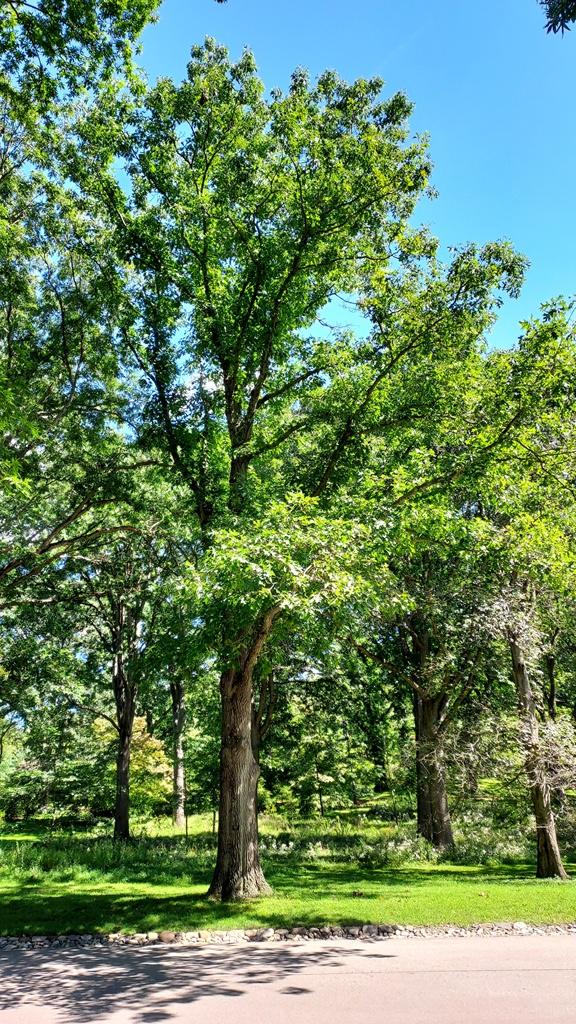
©Roderick Cameron
The Morton Arboretum also has a single specimen, the history and source of which are described as “murky”. That area of the arboretum has a number of oak trees that were received and planted in spring 1940. One of these accessions was a group of 10 Q. coccinea. Ed Hedborn, the Manager of Plant Records, suspects but can’t prove that their Q. ×benderi is one of those originals (pers. comm. 2025).
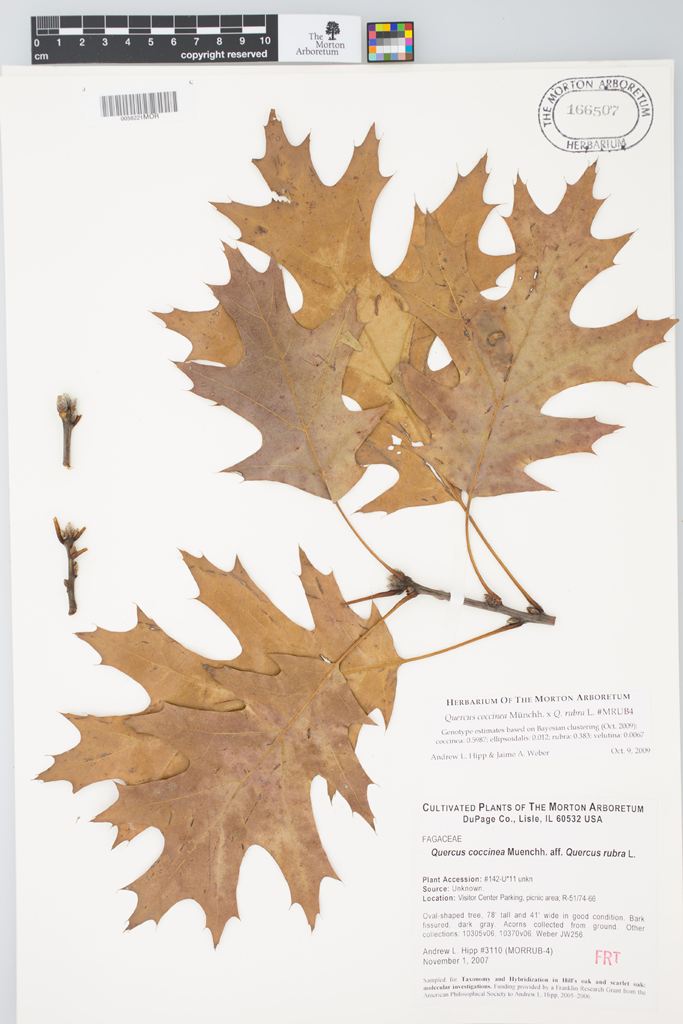
Ed also drew our attention to the above image of a herbarium sheet at The Morton Arboretum Herbarium, remarking that it “looks like it shows remnants of red fall color.” As we have noted, formal descriptions of Q. ×benderi have consistently pointed to yellow autumn color as being diagnostic, but we have seen anecdotal evidence of occasional red color. Jon Hetman of the Arnold Arboretum directed us to this record on iNaturalist (pers. comm. 2025). It is rather odd that two parent species renowned for their red leaf color in the fall should give rise to hybrid offspring that color yellow, and perhaps the occasional backcross with one parent would partially restore the red color. Who knows? All suggestions gratefully received.

©Roderick Cameron
Acknowledgments
Thanks to Ed Hedborn, Manager of Plant Records at The Morton Arboretum, and Jon Hetman, Associate Director of External Relations and Communications at the Arnold Arboretum, for helpful information.
Works cited
Baenitz, C. 1903. Die nordamerikanischen Scharlach-Eichen (Quercus rubra L., coccinea Wangenh. und palustris Duroi) und ihre Bastarde in den Scheitniger Anlagen in Breslau. Allgemeine Botanische Zeitschrift für Systematik, Floristik, Pflanzengeographie etc. 9: 81−87 [link]
Bunting, A. 1995. The Value of a Scientifically Aesthetic Oak Collection at the Scott Arboretum. International Oaks No. 6: 46−44 [link]
Palmer, Ernest J., 1948. Hybrid Oaks of North America. Journal of the Arnold Arboretum, Vol. 29, No. 1: 1−48 [link]
Sargent, C.S., C.E. Faxon, and M.W. Gill. 1922. Manual of the Trees of North America (exclusive of Mexico) Second Edition. Boston and New York: Houghton Mifflin Co. [link]
The Tree Register. 2025. https://www.treeregister.org/


